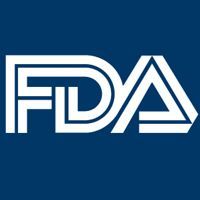Article
Peyronie’s treatments costs, outcomes compared
Researchers comparing cost and outcomes for surgery, collagenase clostridium histolyticum (CCH [Xiaflex]), and RestoreX traction therapy for Peyronie’s disease found traction is the most cost-effective option for achieving 20% or greater curvature improvement, but CCH or surgery might be more cost-effective and efficacious in specific scenarios.
Chinnapong - stock.adobe.com

Researchers comparing cost and outcomes for surgery, collagenase clostridium histolyticum (CCH [Xiaflex]), and RestoreX traction therapy for Peyronie’s disease found traction is the most cost-effective option for achieving 20% or greater curvature improvement, but CCH or surgery might be more cost-effective and efficacious in specific scenarios.
Authors of the study, published in the Journal of Sexual Medicine (2019; 16:1421-32), compared 201 Peyronie’s disease patients who were treated with the RestoreX traction device, CCH, or the surgical options plication or incision and grafting at Mayo Clinic, Rochester, MN.
They found the overall success rate of surgery was 96%, compared with 66% with CCH and 48% with traction. At a decade post treatment, traction was the most cost-effective with an average per-patient cost of $883, compared to $11,419 for surgery and $33,628 for CCH.
But those percentages and costs don’t tell the whole story. CCH, the most expensive option, resulted in the highest quality of life years rating due to relatively low complications and intermediate rates of success, researchers said. And the high rate of success with surgery was tempered by intermediate costs and high morbidity.

Research models have to take several factors into consideration when comparing procedures like these, according to study author and urologist Landon Trost, MD, of the Male Fertility and Peyronie’s Clinic in Orem, UT. One example: Gold-standard surgical options of plication and incision and grafting are associated with complications such as erectile dysfunction.
Also see: ADT may increase likelihood of urethral atrophy
“You have to take these side effects into account in any cost-effective model. If you take someone who is not dependent on erectile dysfunction meds, for example, and you make them dependent on meds and maybe even surgery with an implant, that adds to potential costs,” Dr. Trost said.
A debate among members of the International Society for Sexual Medicine is whether high cost is a potential knockout factor for CCH and urologists should instead perform surgery for Peyronie’s disease, according to Dr. Trost.
“But I think one of the key take-homes from the study is that Xiaflex is indeed a cost-effective therapy and it’s worthwhile for people to consider undergoing that treatment,” he said. “Traction of course is the most cost-effective because it’s such an inexpensive therapy, but it also has the least overall effectiveness compared to injections or surgery. Surgery is by far the most effective but has the most side effects.”
Next: What is each patient’s definition of success?What is each patient’s definition of success?
The ideal procedure for each patient comes down to that patient’s definition of success, according to Dr. Trost, who was at Mayo Clinic at the time of the study.
“If someone’s goal is to improve penile pain, then none of these therapies are appropriate. If the goal is to increase penile length, then only traction is appropriate. If the goal is a complete curve correction, then really surgery is your best option. But if the goal is to improve curvature to a point of possibly avoiding surgery or to improve functionality, that’s what this study is looking at. That tends to be most men who come in with Peyronie’s disease-it’s not necessarily to get 100% straight but to get functional again. With that group, the most cost-effective is traction alone, but Xiaflex is a viable option,” Dr. Trost said.
Dr. Trost said his current standard for treating Peyronie’s disease is combination therapy of CCH and traction therapy.
Read: New online men’s health sites divide opinion
Dr. Trost, who invented the RestoreX penile traction device but does not have financial ownership in the company that now owns it, PathRight Medical, also authored a paper published in the Journal of Sexual Medicine (2019; 16:891-900) that concluded, “Use of the RestoreX device enhances mean curvature outcomes by 71% and increases penile length in men with [Peyronie’s disease] receiving CCH therapy.”
“I think a lot of us, from a physician standpoint, are curious about what insurance will do over time. There have been increasing questions about Xiaflex being too expensive for patients.”
Dr. Trost said he hopes papers like this, which show Xiaflex is equivalent from a cost-effectiveness standpoint to surgery, will help give providers options rather than restricting them based on what insurance alone dictates.
















